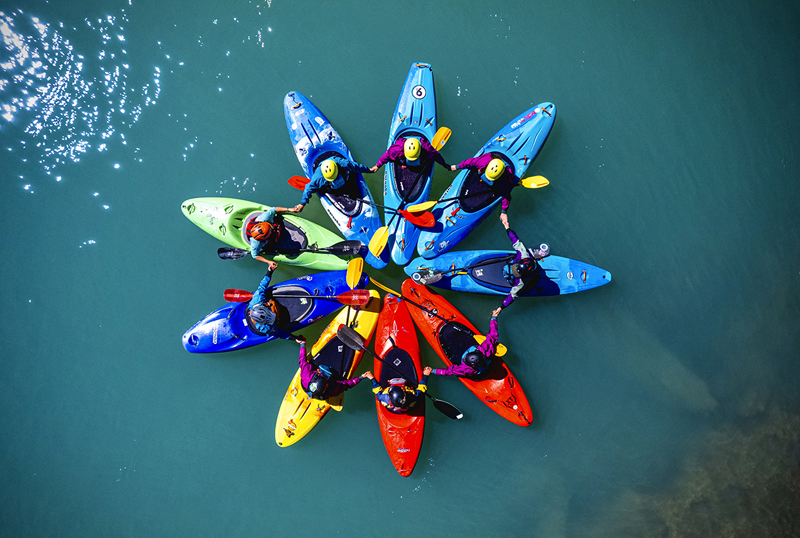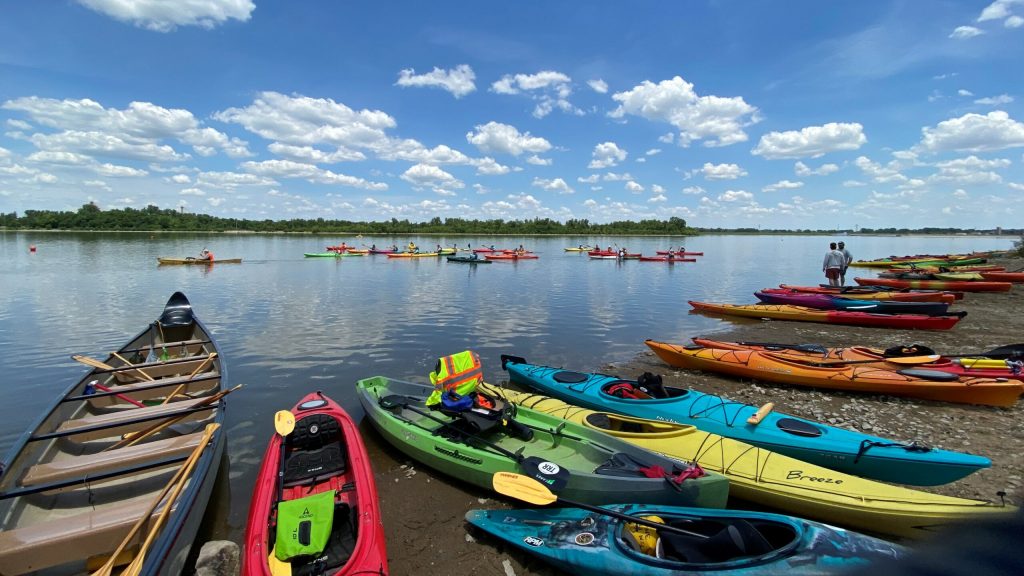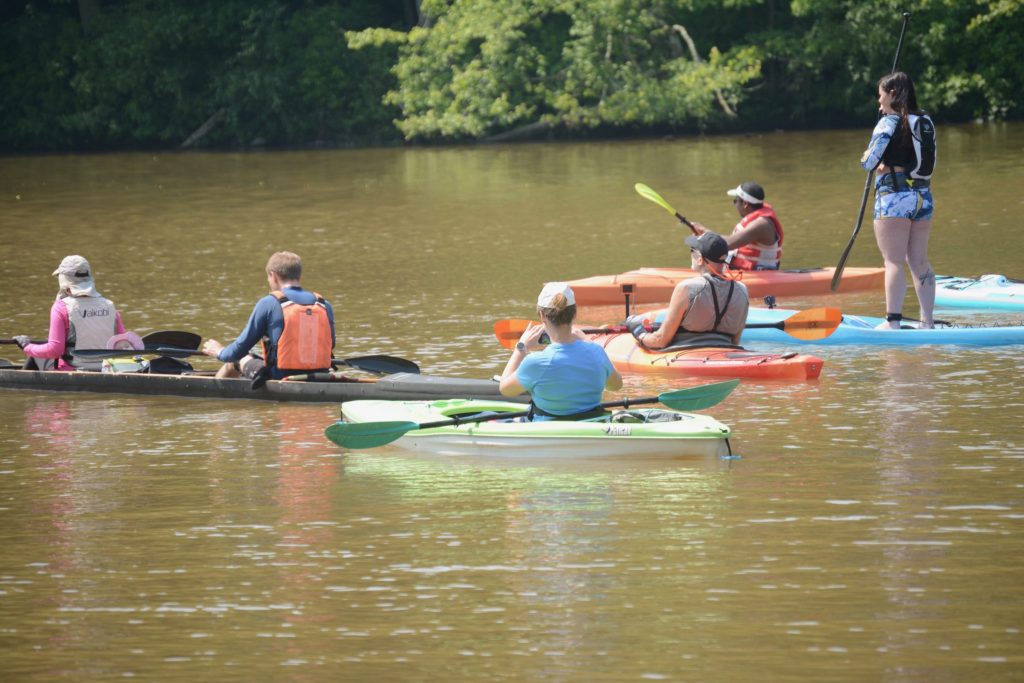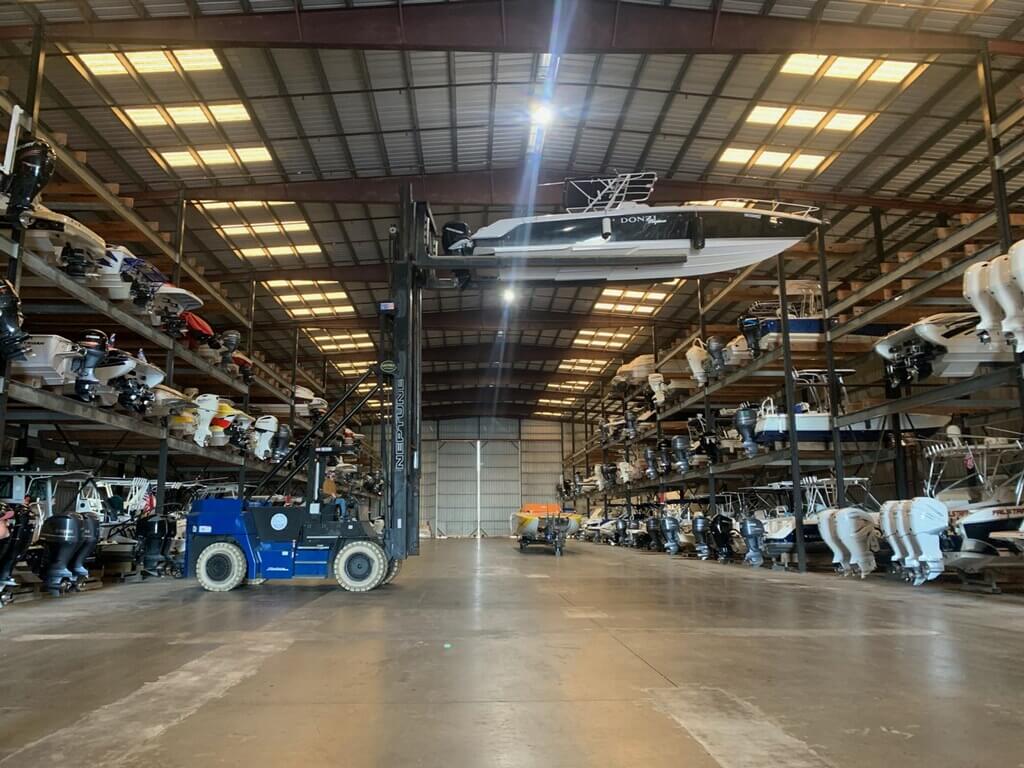Used Kayaks for Sale: Top Picks and Buying Guide 2024
Used kayaks for sale are an excellent option for individuals looking to get into the sport of kayaking without breaking the bank.
With a variety of types, features, and price points available in the market, finding the perfect pre-owned kayak to suit one's needs can be an exciting and rewarding experience.

It's essential to arm oneself with the right knowledge and resources to find the best deal and ensure a satisfying, safe, and enjoyable time on the water.
Kayaking is a versatile and accessible outdoor activity suitable for people of all ages and skill levels.
Purchasing a used kayak not only saves money but also helps reduce environmental impact by giving new life to previously owned equipment.
Before embarking on the journey to find the perfect used kayak, it's important to understand the different types of kayaks available, the essential factors to consider, and the most reliable places to search for used kayaks.

Key Takeaways
- Used kayaks are an affordable and eco-friendly option for getting into the sport of kayaking
- It's crucial to understand various kayak types and features before finalizing a purchase
- Conduct thorough inspections and consider reliable sources to find the perfect used kayak
Why Consider Used Kayaks for Sale
Benefits of Buying Used
Purchasing a used kayak can offer numerous advantages for both beginner and experienced kayakers.
Experienced paddlers can find specialized or discontinued models that cater to their specific needs.
For beginners, a used kayak can be an excellent starting point, as it provides an opportunity to learn the basics of kayaking without a significant upfront investment.
Additionally, used kayaks often come with some added accessories, such as paddles or life vests, resulting in extra savings.
Potential Cost Savings
One of the primary reasons people consider used kayaks for sale is the potential for cost savings.
Used kayaks are typically cheaper than their brand-new counterparts. Buyers can find high-quality used kayaks with minor cosmetic blemishes or scratches, which do not affect performance, at a fraction of the price of a new one.
This allows kayakers to potentially upgrade to a higher-end kayak while staying within their budget. Shopping for used kayaks locally or during off-season sales can lead to even greater savings.

Environmental Considerations
Lastly, the environmental benefits of purchasing a used kayak should not be overlooked.
Buying a used kayak promotes the reuse of equipment and reduces the demand for new production, which in turn conserves resources and reduces waste.
The manufacturing process of a new kayak requires energy and raw materials, while the disposal of old kayaks can have a negative environmental impact.
By choosing a used kayak, buyers contribute to a more sustainable approach to outdoor recreation.
Examining Different Types of Kayaks
Sit-On-Top vs. Sit-In Kayaks
Sit-on-top kayaks are an excellent option for beginner paddlers or those looking for easy entry and exit.
They feature a molded seat and footrests on top of the kayak, providing a comfortable and stable platform for paddling.
Sit-on-top kayaks are generally more user-friendly, offering great stability and are often self-bailing, meaning water drains through scupper holes.
Conversely, sit-in kayaks have a cockpit that the paddler sits inside. They provide better protection from the elements and are suited for paddling in colder water or inclement weather conditions.
Sit-in kayaks tend to have a sleeker design, which often leads to improved speed and maneuverability.
Fishing vs. Recreational Kayaks
Fishing kayaks are specifically designed for anglers and come equipped with features such as rod holders, gear storage, and fish-finding electronics mounts.
They prioritize stability and have a wider beam, which allows for standing while casting.
Fishing kayaks are often available in both sit-on-top and sit-in configurations.
On the other hand, recreational kayaks are designed for casual paddlers and focus on ease of use, comfort, and stability.
These kayaks are suitable for calm waters, such as lakes and slow-moving rivers. They are typically shorter and wider, making them easy to maneuver and very stable.
Tandem vs. Solo Kayaks
Tandem kayaks are designed to accommodate two paddlers, whereas solo kayaks are built for one person.
A tandem kayak offers the advantage of shared paddling effort, making it easier to cover long distances or navigate through strong currents.
These kayaks are longer and can often have more storage capacity, which is ideal for multi-day trips or transporting gear. However, tandem kayaks can be less maneuverable and difficult to transport due to their size.
Solo kayaks are lighter, more maneuverable, and easier to transport. They allow for greater independence on the water and can be tailored to fit individual paddling styles and preferences.
Specialized Kayaks
In addition to the categories mentioned above, there are also specialized kayaks tailored to specific activities or environments. Some examples include:
- Inflatable Kayaks: These kayaks are easily portable and can be deflated for storage and transport. They are great for those with limited storage space or who must carry their kayak to the water.
- Whitewater Kayaks: Designed for navigating through rapids and turbulent waters, these kayaks are shorter and have a more robust construction to withstand impacts.
- Touring Kayaks: These long, narrow kayaks are built for speed and efficiency in open waters and longer distances, making them ideal for advanced paddlers and multi-day trips.
When shopping for a used kayak, make sure to consider the type of kayak that will best suit your needs and the intended use.
Assessing factors such as stability, maneuverability, and the availability of features crucial to your paddling experience can help you make an informed decision in selecting the right kayak.
What to Look for When Buying a Used Kayak
Condition Assessment
When considering a used kayak for purchase, it is important to assess the overall condition of the kayak.
Examine the kayak for any visible signs of wear and tear, such as scratches or dents.
Inspect the hull of the kayak; this is the area that has the most contact with the water and is subject to the most wear.
Pay attention to the stern, as damage here may be caused from dragging the kayak on the ground 1.
Quality and Durability
The quality of a used kayak is crucial to its performance and longevity.
A well-built kayak should be made of high-quality materials and have a strong hull to withstand the forces exerted on it during paddling.
When examining the kayak, assess its stability in the water and its performance during a test run.
It is beneficial to familiarize yourself with reputable kayak brands that are known for their durability and performance 2.
Previous Repairs and Damage
Before making a decision, make sure to inquire about any previous repairs or damage the kayak has experienced.
Check for signs of cracks, gouges or any deformities in the hull or the surface of the kayak.
If the kayak has been repaired, ask for information on the repairs, such as what was fixed and when it was done.
Inspect the cockpit outfitting to ensure it works properly and that there are no issues with the seat or other components 3.
Footnotes
- Guide To Buying Used Kayaks - What To Look Out For... - Kayak Guru ↩
- What to Look For When Buying a Used Kayak? Complete Guide ↩
- Everything You Need To Know About Buying A Used Kayak ↩
Where to Find Used Kayaks
Online Marketplaces and Forums
There are many online marketplaces where you can find used kayaks for sale.
One of the most popular platforms is eBay, which offers a wide range of new and used kayaks from various sellers.
In addition to eBay, other online marketplaces such as Facebook Marketplace also list used kayaks from local sellers.
When searching for used kayaks online, make sure to read the item description and the seller's reviews carefully to ensure a smooth transaction.
Kayaking forums can also be a great place to find used kayaks.
These forums typically have dedicated sections for buying and selling used kayaks.
The Paddling.com is an example of a forum where people can buy and sell both new and used kayaks within the largest community of paddling enthusiasts.
Local Retailers and Resellers
Local retailers might also offer used kayaks, especially those specializing in outdoor and water sports equipment.
These retailers often sell used kayaks that were either traded-in or refurbished, giving buyers a chance to examine the kayaks in person before purchasing.
Resellers can also be a valuable source for finding used kayaks.
Look for local shops or dealers that specialize in refurbishing and selling used kayaks, as they may offer curated selections of kayaks in good condition.
Kayaking Communities and Clubs
Kayaking communities and clubs can be another excellent source for finding used kayaks.
Many avid kayakers are eager to help newcomers find the right kayak, and they may have connections to others looking to sell their used gear.
Kayaking clubs may also hold annual sales or swap events, offering an opportunity to get a used kayak at a reasonable price.
Additionally, you can try reaching out to local clubs or attending their events to meet other kayakers and learn about available used kayaks for sale.
Pricing and Negotiation Strategies
Understanding Market Value
When looking for used kayaks for sale, it's essential to understand the market value.
This depends on the kayak's condition, age, and accessories.
Begin by researching the exact model of the kayak you're interested in and find out what it costs new.
You should also consider that kayaks depreciate about 50% within five years after being bought new1.
Factors to consider:
- Model: Popular models or those with unique features might be higher in demand, affecting the price.
- Age: Older kayaks are likely to be cheaper but might also require more maintenance or repairs.
- Condition: Inspect the kayak thoroughly for any damages or wear and tear that could lead to additional repair costs.
- Accessories: Additional gear or modifications can impact the kayak's price, as they add value or functionality.
How to Negotiate with Sellers
When looking to buy a used kayak, negotiation plays a crucial role in getting the best deal. Here are a few strategies to apply:
- Set your budget: Know your limit and stick to it. It is important not to get emotionally attached to the kayak, as this can cause you to overspend.
- Do your research: Familiarize yourself with the market value of the kayak and take note of any additional costs that may arise due to repairs or replacements.
- Be patient: Timing is key; sellers may be more flexible if they are looking for a quick sale or have had the kayak listed for a long time.
- Make an initial offer: Start by offering a price lower than your budget but within a reasonable range. This can give you room to negotiate and potentially settle at a more desirable price.
- Highlight any issues: Discuss the kayak's condition and point out any discrepancies or damages that you've noticed. This can open up room for negotiation on the price.
Remember to maintain a confident and neutral tone during negotiations.
By showing knowledge and understanding, you can have a better chance of convincing the seller to agree to a fair price.
Keep in mind that each deal is unique, and factors such as the seller's eagerness to sell or the kayak's demand can also impact the process.
Footnotes
Safety Checks and Pre-Purchase Inspections
Checking for Wear, Tear, and Sun Damage
When looking for a used kayak, one of the most essential aspects to consider is the overall condition of the kayak.
Start by inspecting the exterior of the kayak, mainly focusing on signs of wear and tear.
Look for deep scratches, dents, or cracks that might compromise the kayak's structural integrity or performance.
It is quite common for used kayaks to have some scuffs or minor scratches, but anything more severe should raise concerns.
Moreover, sun damage is another crucial factor to watch out for during the inspection.
Prolonged exposure to UV rays can cause the kayak material to weaken and become brittle.
The most apparent sign of sun damage is fading or discoloration, especially in areas where the kayak was in direct contact with sunlight.
To assess the extent of sun damage, press on the faded areas to see if they feel brittle or unusually soft.
Ensuring the Kayak is Not Stolen
Before making any purchase, it's essential to verify that the kayak you're looking to buy is not stolen property.
One effective approach to ensure that the kayak is legally-owned is to ask the seller for any proof of purchase or ownership documentation.
Most reputable sellers will have such documentation, which can help you feel confident about your purchase.
Another useful method is to check for any unique identifying features on the kayak, such as serial numbers or registration stickers.
Use these identifiers to confirm the kayak's legal status with local authorities or online databases.
Test Paddling Before Purchase
Finally, if possible, request to test paddle the kayak before purchasing.
This will allow you to get a better feel for how the kayak handles on the water and identify any potential issues in its performance.
During the test paddle, make note of the following:
- Stability and comfort.
- Tracking and maneuverability.
- Presence of unusual noises or vibrations.
- Water leaks or any signs of water inside the kayak.
Be sure to communicate any concerns with the seller and address any faults before completing the purchase.
Accessories and Additional Gear
Essential Kayaking Accessories
When purchasing a used kayak, it's important to also consider the necessary accessories that enhance your kayaking experience.
One of the most essential accessories is a paddle.
Kayak paddles come in various materials, lengths, and blade shapes. It's important to choose one that suits your style of paddling and the type of water you plan to explore.
Another crucial accessory is a life jacket or personal flotation device (PFD).
Safety should always be a top priority when kayaking, and a PFD can save your life in case of an accident.
Other useful items include a bilge pump to remove water from your kayak, a spray skirt to protect you and your kayak's cockpit from splashes, and a dry bag to keep your belongings safe and dry.
Some kayakers may also appreciate convenience accessories such as fishing gear and canoe graphics to personalize their experience on the water.
Transportation and Storage Solutions
Transporting and storing your kayak can be a challenge, especially if you don't have a designated space for it. There are several solutions available to make these tasks easier.
For transportation, consider investing in a kayak cart or a roof-mounted carrier system.
A kayak cart makes it easy to move your kayak from your vehicle to the water, while a roof-mounted carrier allows you to transport it securely on top of your car.
When it comes to storage, vertical storage racks and wall-mounted systems are great ways to keep your kayak safe and out of the way.
These solutions can be installed in a garage, shed, or other suitable storage area.
Make sure the system you choose can support the weight and size of your kayak and is easy to access when you're ready to hit the water.
After the Purchase
Registration and Legal Requirements
After purchasing a used kayak, it's essential to ensure all registration and legal requirements are met.
Depending on your location, this may involve registering the kayak with appropriate authorities and carrying specific safety equipment on board. Be sure to research your region's regulations and adhere to them.
Maintenance and Upkeep
Maintaining your kayak will prolong its lifespan and provide you with a safer, more enjoyable paddling experience.
Conduct routine inspections to check for signs of wear and tear, such as cracks, dents, or weakened areas in the hull.
Keep an eye out for any damage or deformities that may have been missed during the initial examination.
Additionally, remember to clean and store your kayak properly after each use to prevent mold, mildew, and UV damage.
Below is a brief checklist for maintaining your kayak:
- Cleaning: Rinse your kayak with clean water and dry it thoroughly.
- Protection: Apply a UV protectant spray on hard-shell kayaks to prevent sun damage.
- Repair: Address any damage promptly by using appropriate repair kits or consulting a professional.
- Storage: Store your kayak in a cool, dry place, either on a rack or supported by foam blocks to prevent warping.
Joining Paddling Groups
As a new owner of a used kayak, consider becoming a part of a paddling community.
Joining paddling groups or online forums will connect you with fellow enthusiasts who can offer valuable advice, share local paddling spots, and even organize group outings.
Immersing yourself in the paddling community can enhance your skills, safety awareness, and overall enjoyment of the sport.
Frequently Asked Questions
What factors should I consider when buying a used kayak?
When buying a used kayak, consider factors such as the type of kayak (recreational or touring), material, condition, size, and price.
Research the kayak's age and inspect it thoroughly for damage or weak spots.
How can I determine the right size kayak for my height and weight?
To determine the right size kayak, consider your height, weight, and desired activities.
A good fit is essential for comfort and control. Some manufacturers provide sizing charts to help you select a suitable kayak.
What are some tips for inspecting a used kayak before purchase?
Inspecting a used kayak involves checking for deformities, dents, cracks, or gouges visually and by running your hands over the hull and decks.
Ensure the kayak's outfitting works properly and is comfortable for you.
Refer to Kayak Addicts' Step-by-Step Inspection Checklist for an in-depth guide to inspecting a used kayak.
Where is the best place to find a used kayak?
Possible places to find used kayaks include local kayak shops, sporting goods stores, garage sales, and online marketplaces.
You can also check with friends or local paddling clubs for details on available used kayaks.
How much should I expect to pay for a used kayak?
The cost of a used kayak depends on its age, condition, and brand. Typically, they can range anywhere from a few hundred dollars up to thousands, depending on the specific circumstances.
Make sure to research market rates for similar kayaks when setting your budget.
What is the difference between a recreational kayak and a touring kayak?
A recreational kayak is designed for casual paddlers and short trips on calm waters. This design emphasizes comfort and stability.
Touring kayaks, on the other hand, are intended for longer journeys. They provide more storage capacity and better tracking capabilities. They are also generally faster and designed to handle various water conditions.
Each type has its advantages depending on your needs and desired activities.
Charlie is Editor-in-Chief of Sea Magazine







